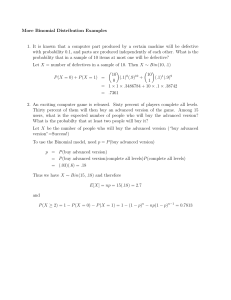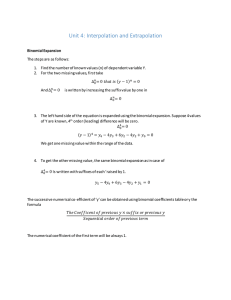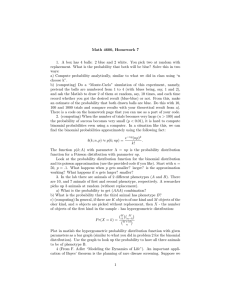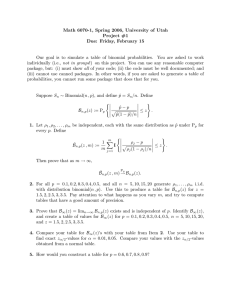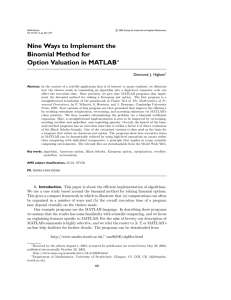ex5m2_3.doc
advertisement
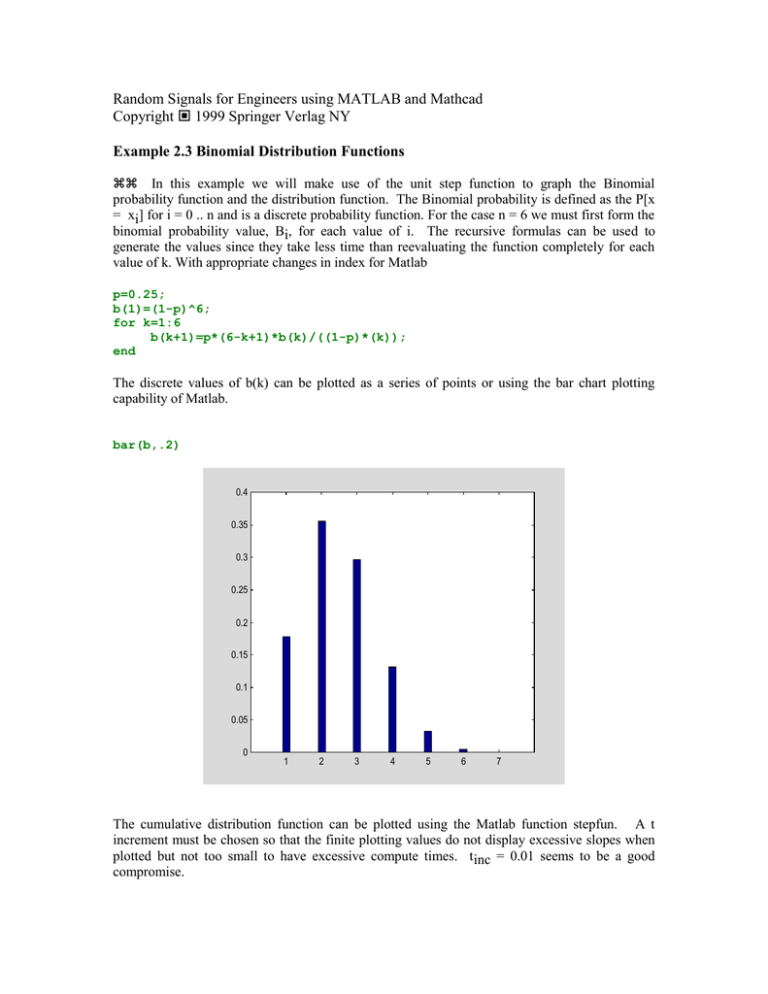
Random Signals for Engineers using MATLAB and Mathcad Copyright 1999 Springer Verlag NY Example 2.3 Binomial Distribution Functions In this example we will make use of the unit step function to graph the Binomial probability function and the distribution function. The Binomial probability is defined as the P[x = xi] for i = 0 .. n and is a discrete probability function. For the case n = 6 we must first form the binomial probability value, Bi, for each value of i. The recursive formulas can be used to generate the values since they take less time than reevaluating the function completely for each value of k. With appropriate changes in index for Matlab p=0.25; b(1)=(1-p)^6; for k=1:6 b(k+1)=p*(6-k+1)*b(k)/((1-p)*(k)); end The discrete values of b(k) can be plotted as a series of points or using the bar chart plotting capability of Matlab. bar(b,.2) 0.4 0.35 0.3 0.25 0.2 0.15 0.1 0.05 0 1 2 3 4 5 6 7 The cumulative distribution function can be plotted using the Matlab function stepfun. A t increment must be chosen so that the finite plotting values do not display excessive slopes when plotted but not too small to have excessive compute times. tinc = 0.01 seems to be a good compromise. t=0:.01:6.9; t0=1:7; plot(bin_dist(b,t,t0)) 1 0.9 0.8 0.7 0.6 0.5 0.4 0.3 0.2 0.1 0 0 100 200 300 400 500 600 700 The following functions are defined: function y=bin_dist(b,t,t0) % BIN_DIST is the cumulative distribution for a % binomial distribution where b = vector probabilites % t = time vector and t0 is where the steps take place % b and t0 must be the same length k=length(b); y=zeros(1,length(t)); for i=1:k y = b(i)*stepfun(t,t0(i))+y; end function y=stepfun(t,t0) % stepfun y =(t>t0);
